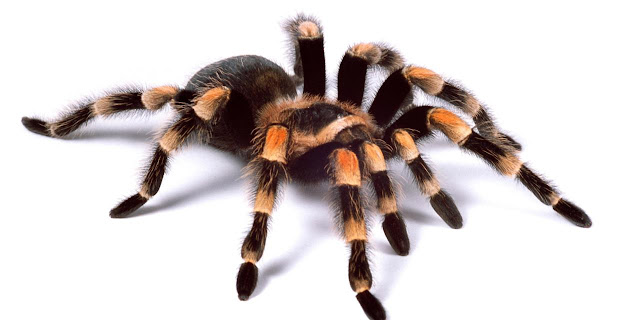
1. Female tarantulas can live for over 30 years in the wild, and are incredibly long-lived. Even in captivity, cases of living for over 20 years have been recorded. Males, on the other hand, do not live long after reaching sexual maturity, and their life expectancy is only 5-10 years. Males do not even molt in adulthood.
2. The largest tarantulas have a limb span of about 25 cm. Even tarantula lovers will have trouble staying calm when a tarantula of this size walks around their heads. Film directors like to use tarantulas in horror scenes, which is why these spiders have an undeservedly bad reputation.
3. Tarantulas are quite tame and rarely bite humans. Many larger predators will easily and quickly make a meal of a tarantula, so they are not tempted to attack something that is so much larger than them, namely a human. If a tarantula does bite you, nothing terrible will happen because their venom is not strong. In terms of toxicity, tarantula venom can be compared to bee venom.
4. Tarantulas defend themselves by throwing barbed hairs at their attackers. If the tarantula feels frightened, it uses its front legs to direct the barbed hairs from its abdomen. You’ll know you’ve been stung by a tarantula, as these stings cause an unpleasant and irritating rash. Some people may have a serious allergic reaction. The tarantula also pays the debt – this can be seen by the exposed part of the belly.
6. A fall can be fatal for a tarantula. Tarantulas have very thin skin, especially on their belly. Even a fall from a small height can cause fatal wounds to the tarantula’s exoskeleton. For this reason, carrying a tarantula is not recommended. It is very likely that at some point either you or the tarantula will get scared. What will you do if a large, hairy spider starts wriggling on your hand? You will most likely drop it, and very quickly.
7. Tarantulas have retractable claws on each leg, just like cats. Because falling can be so dangerous for tarantulas, it is essential that they have a good grip on the surface they climb. Although most tarantulas prefer to stay on the ground, they do occasionally climb trees or other objects. By extending their special claws, tarantulas can more easily grab onto any surface.
8. Although tarantulas do not make webs, they do use silk. Like all spiders, tarantulas produce silk and put this wealth to clever use. Females use the silk to decorate the inside of their burrows and to attach it to the walls. Males weave a silk bed and deposit their sperm on it. Females encase their eggs in a silk cocoon. Tarantulas use the silk to trap potential prey or to deter predators. Scientists have recently discovered that tarantulas can produce silk with their feet, unlike other spiders that use their webs.
9. Tarantulas are most active in the summer months, when males also seek out females. During the warmest months of the year, sexually mature males begin to search for females. Most mating occurs during this period, and males neglect their own safety and walk around during daylight hours. If a male finds a female in a burrow, he will lightly tap his feet, announcing his presence. The mating is brief, the male quickly releases sperm and tries to escape. For the female, this “carrier” is a good source of essential protein, and she will often try to eat him when mating is over.
10. Tarantulas can regenerate lost limbs. Because tarantulas molt several times during their lives and replace their exoskeleton as they grow, they have the ability to repair any injuries they have sustained. If a tarantula loses a leg, a new one will appear in the same place during the next molt. Depending on the age of the tarantula and the time period until the next molt, the regenerated leg may not be the same length as the previous one. However, after a successful molt, the leg will eventually grow enough to reach its normal size. Tarantulas will sometimes eat their non-functional legs to restore protein.
Leave a Reply